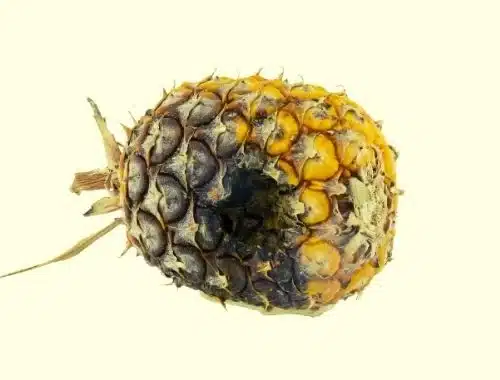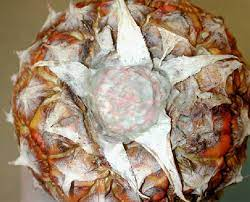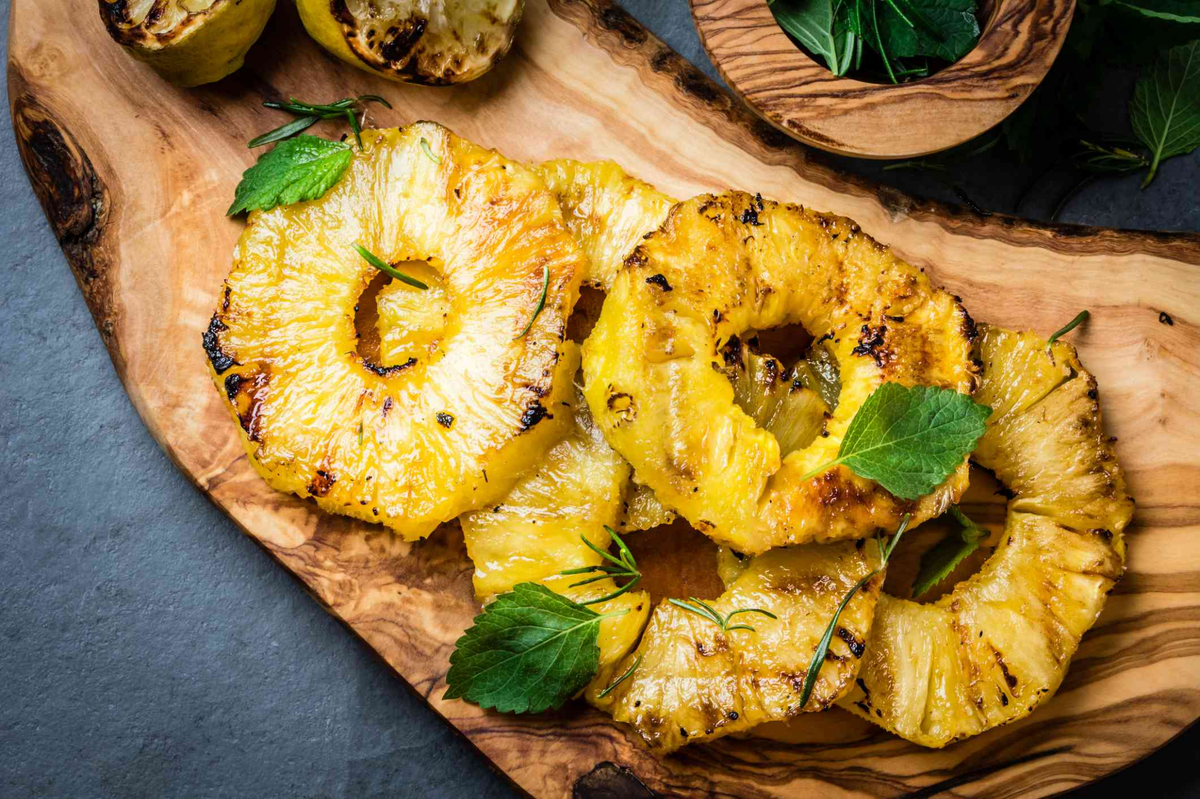Can you eat a pineapple with mold on the outside?
Pineapple is a tropical fruit that is highly nutritious and delicious to eat. However, when you notice white patches or signs of mold on the outer surface of the pineapple, it may leave you wondering if it is safe to eat.

In this article, we will be discussing the basics of eating a pineapple with mold on the outside, including essential information such as the shelf life of pineapples, signs of a rotten pineapple, proper storage methods, and potential risks of eating moldy pineapples. So, let’s explore all the basics of eating a pineapple with mold on the outside.
What are the Signs of a Moldy Pineapple?
Pineapples are a delicious tropical fruit that is packed with nutrients and a sweet aroma. However, pineapples – just like any other fruit – can go bad, especially if not stored properly. One common issue that can arise with pineapples is mold developing on them. So, what are the signs of a moldy pineapple?
The most evident sign of mold on a pineapple is the presence of white patches or spots on the exterior. These spots can be an indication that mold has started to grow on the pineapple. Additionally, a moldy pineapple may have a sour or unpleasant odor, which can mean that it is no longer fresh.
When cut open, a moldy pineapple can have brownish flesh that is mushy, and small, visible polyps may be present. This is another sign that the fruit has gone bad, and it is best to steer clear and dispose of it.
It is crucial to visually inspect the pineapple before consuming it. If you detect any signs of mold, especially on the exterior, it is advisable to dispose of the whole fruit and not consume any of it. Eating moldy pineapple can lead to food poisoning, which can cause severe stomach aches and other issues, putting your health at risk.
In conclusion, it is vital to store pineapples properly and inspect them closely before consuming them. And, if you spot any white patches, sour smell, or brownish flesh, these are all signs of a moldy pineapple, and it is best to dispose of it immediately to avoid any potential health risks.
How to Tell If a Pineapple is Ripe and Ready to Eat
Pineapples are a delicious tropical fruit that can be enjoyed fresh or incorporated into various recipes. However, knowing when a pineapple is ripe and ready to eat can be challenging, especially for those who are not familiar with this fruit. In this article, we will discuss some essential tips on how to tell if a pineapple is ripe and ready to eat, so you can confidently select the perfect pineapple every time. Let’s dive in!
Color
The color of a ripe pineapple is a critical factor in determining if the fruit is safe to eat or not. A freshly harvested pineapple should have a bright green color on its exterior. As it ripens, it changes from green to yellow, and the fruit’s sweetness and flavor increase.
When you buy a pineapple that has yellow-colored skin all over and limited or no green spots, you are dealing with a ripe and sweet one. The fruit should have a consistent yellow color, and the eyes surrounding the fruit should look fresh and shiny, indicating that the fruit is juicy and delicious.
However, it’s critical to note that sometimes pineapples develop brown spots as they ripen. If the brown spots cover a large area of the fruit’s exterior, it could be a sign of an overripe or spoiled fruit.

Sometimes, you might observe white spots on the fruit, and it’s essential to note that these are not mold spots. Instead, they are calcium spots that develop naturally as the fruit ripens. These spots are safe to eat and do not pose a risk to your health.
In summary, when considering the color of a pineapple, it’s essential to look for a consistent yellow color all over the fruit and ensure that there are minimal green or brown spots. This way, you can determine if the fruit is safe to eat or if it’s overripe or spoiled.
Soft Spots
Soft spots can occasionally appear on a pineapple, and they are typically a sign of overripe or damaged fruit. These soft spots develop when certain areas of the fruit start to rot, making it crucial to check your pineapple before consuming it.
To determine if your pineapple has soft spots, gently press on the flesh of the fruit and feel for any areas that give way or feel mushy. Soft spots that are brownish in color or emit an unpleasant odor usually indicate that the fruit is rotten or overripe. If you detect any of these signs, it’s best to discard the fruit to avoid any potential stomach issues.
When purchasing pineapples, it’s important to inspect the fruit thoroughly for soft spots or any signs of damage. If you notice any soft spots on the exterior of the pineapple, it’s best to avoid buying it altogether. Proper storage can also help prevent soft spots from developing on your pineapple. Be sure to store your pineapple in an airtight container in the refrigerator or use frozen pineapple if you’re not planning on consuming the fruit right away.
In summary, soft spots on a pineapple are a sign of overripe or damaged fruit and should be avoided. Take the time to inspect your pineapple before consuming it to avoid any potential stomach issues. Proper storage can also help preserve the life of your pineapple, allowing you to enjoy its delicious taste and nutritious benefits.
Sweet Aroma
One of the most important aspects of selecting a ripe pineapple is the sweet aroma emanating from the fruit. A strong and noticeable sweet aroma is an indicator of a delicious and juicy pineapple that is ready to eat.
When selecting a pineapple at a supermarket or grocery store, it’s important to take the time to examine the fruit and use your sense of smell as a key indicator for fruit quality. Take the pineapple and bring it close to your nose, inhaling deeply to detect the sweet aroma.
A pineapple that is not ripe will not have a noticeable aroma, which is a sign that the fruit is not ready to be consumed. A sour odor or an unpleasant smell may also indicate that the pineapple is overripe or spoiled, so it’s important to avoid such fruits.
To ensure that you’re getting the most delicious and nutritious pineapple, make sure to choose fruits that have a strong and sweet aroma. This sweet aroma means that the fruit is at its optimal ripeness and ready to be eaten.
In conclusion, selecting a ripe and sweet pineapple requires careful examination and attention to detail. Using your sense of smell as an indicator for fruit quality will help you choose the freshest and most delicious pineapple for your next meal or snack.
Green Leaves
When it comes to selecting a fresh and ripe pineapple, it’s important to pay attention to the green leaves on the top of the fruit. The green leaves of a pineapple can provide valuable information about the age and freshness of the fruit.
To begin with, observe the placement of the leaves. If they are firmly attached to the crown of the pineapple, it is a sign that the fruit is fresh and recently harvested. In contrast, if the leaves are loose or can be easily plucked out, it may indicate that the pineapple is old and may have lost its nutritional value.
Next, check the color and texture of the leaves. Typically, fresh and ripe pineapples have bright green leaves that are stiff and healthy-looking. The leaves should be free from any brown spots or discoloration, which can indicate that the fruit is not fresh.

On the other hand, overripe or bad pineapples have wilted or brown leaves with a sour odor that can make the fruit unsuitable for consumption. It’s important to avoid such pineapples as they may be rotten or have already started to ferment.
In conclusion, the green leaves of a pineapple can be a good indicator of its quality and ripeness. To ensure that you’re getting a fresh and delicious pineapple, look for fruits with bright green leaves that are firmly attached to the crown and free from any signs of damage or discoloration.